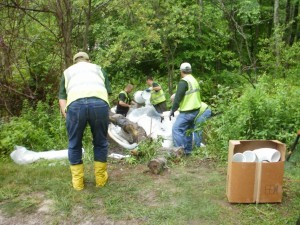Hazardous Waste Operations and Emergency Response (or HAZWOPER for short) is a comprehensive set of guidelines and instructions for cleaning for handling hazardous waste spills. The Occupational Safety and Health Administration (OSHA) is responsible for creating and updating these guidelines so that companies are better prepared to deal with them.
Some people assume that HAZWOPER is a general “catch all” plan for chemical spills, but this isn’t the case. It’s designed for serious incidents where there’s a direct threat to safety. To learn more about HAZWOPER and when it’s required, keep reading.
Note: HAZWOPER only applies to chemical spills where there’s a direct threat to a person’s health or safety. This includes (but not limited to) burns, fires, toxic fumes and carcinogens. If there’s a direct threat to either a worker or the public’s health, HAZWOPER may apply.
Five Applicable Groups For HAZWOPER
According to the OSHA guidelines, there are five distinct groups of employees and employers which are applicable for HAZWOPER. They include the following:
- Hazardous waste cleanup companies which conduct their operations at uncontrolled sites (the keyword being uncontrolled sites). Typical hazardous waste cleanup companies that operate in a controlled factory are not required to follow HAZWOPER procedures.
- Companies involved in corrective actions at chemical spill sites and locations — covered by the Resource Conservation and Recovery Act of 1976 (RCRA).
- Government-owned and/or controlled voluntary cleanup operations involving hazardous waste at uncontrolled sites.
- Companies which treat, store and/or dispose of hazardous waste.
- Hazardous waste emergency response companies and teams.
Incidental vs Emergency Spill HAZWOPER Standards
Chemical spills are typically broken down into one of two different categories: incidental and emergency. Incidental spills are ones which do not pose a direct danger to a person’s health or safety, nor will they pose a direct danger within a short amount of time. These spills aren’t necessary “safe,” but their risk of injury or hazard to one’s health is minimal. Incidental spills can be contained and cleaned by employees who are familiar with the chemical and spill response procedures.
Emergency spills, on the other hand, are more serious and do pose a direct danger to a person’s health and/or safety. These typically include corrosive and flammable chemicals that require a unique response strategy in the event of a spill.
You can read more about the differences between incidental and emergency spills, along with the official standards for HAZWOPER, at https://www.osha.gov/emergency-preparedness/hazardous-waste-operations/faq-hazpower
